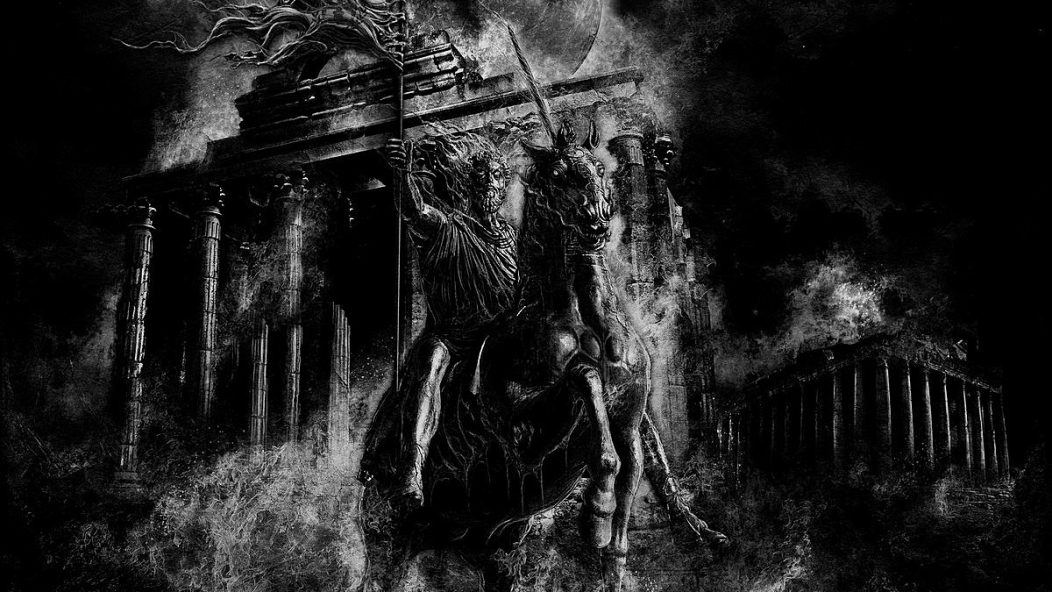
Autokrator Depicts Harrowing "Persecution" Through Obliterating Cruelty (Early Album Stream)
For some, there’s a twisted pleasure derived from getting dominated, from having all control stripped away. While this powerlessness usually manifests through subversive fetishes, the French blackened death metal band Autokrator deliver the auditory equivalent of such an experience. Their latest album Persecution is akin to having one’s hands tied behind their back, and we’re premiering it ahead of its Friday release, along with a track breakdown by guitarist and bassist Loïc Fontaine.
Persecution sits within Autokrator’s thematic wheelhouse, as they’ve previously covered the savagery of the Roman empire and the frightening relationship between authority and obedience earlier in their career. Here, the French duo recount the Christrian persecution ordained by the Romans. They make obelisks crumble, burn religious iconography, and weave a tale of a civilization on the brink of collapse. Narratively, they sell the concept for a lifetime’s supply of Paris’ finest beignets. Their mammoth compositions swirl and topple in on themselves, rising only on the penultimate track “Caesar Nerva Traianus.” As opposed to the total autonomic deprivation the rest of Persecution displays, “Caesar Nerva Traianus” is victorious. Its rattling drums signal an impending triumph, but, as Fontaine reveals in the track-by-track breakdown, it’s a forlorn success.
The entire album runs like one gargantuan punishment due to slick-enough-to-miss-them transitions between tracks. Thankfully, Autokrator recognize the importance of pristine pacing and keep the affair just under thirty minutes (the last track is a spoken word outro which is more insidious than it is a respite). Thus Persection is a guillotine made out of cinder blocks, as crushing as it is swift.
…
…
Track-by-track from Loïc Fontaine – Autokrator Guitarist/Bassist:
The album, Persecution, portrays the persecution of Christians during the Roman Empire. This album, influenced by “Actes and Monuments” or “Book of Martyrs” of historian John Foxe, is divided into 5 chapters, plus one outro.
1. “De Gloria Martyrum Et Confessorum” — The Fourth Persecution, Under Marcus Aurelius Antoninus, A.D. 162:
The first song of the album has been the inspiration of the front cover, made by Nestor Avalos, which represents the dark side of Marcus Aurelius. Despite being an icon of Stoicism and remembered as a good emperor, Marcus Aurelius persecuted the Christians.
Lyrics have been inspired by Saint Polycarp’s dialogue with the Roman Proconsul Statius Quadratus.
2. “The Great Persecution” — The Tenth Persecution, Under Diocletian, A.D. 303:
The song talks about the Diocletianic persecution of the Christians. Diocletian drafted four edicts which led to destructions of cult places, deprivation of some rights, arrests, tortures, and sacrifices.
3. “DCLXVI” — The Second Persecution, Under Domitian, A.D. 81:
The song is about Roman Emperor Domitian and his persecution of the Christians, and the lyrics of this song are from Bible Revelation 8:7 and 13:1. In Roman numerals, DCLXVI represents 666.
According to Bible Revelation 13:18:
“Here is wisdom. Let him that hath understanding count the number of the beast: for it is the number of a man; and his number is Six hundred threescore and six.”
In his book ‘The White Goddess,’ theoretician Robert Graves concludes that DCLXVI stands for Domitius Caesar Legatos Xti Violenter Interfecit— which means “Emperor Domitian violently killed the ambassadors of Christ.”
4. “Antechristus” — The First Persecution, Under Nero, A.D. 67:
This song is parallel to “DCLXV.”
According to some theologians, the Greek version of Nero is “Neron Kaisar,” transliterated into Hebrew letters gives “nrwn qsr” giving 666.
Some theories also draw a parallel between the destruction of Babylon in the Book of Revelation and the Great Fire of Rome during the reign of Nero.
In “The Annals,” Tacitus claims that Nero himself started the burning and burned Christians to serve as lamps by night.
5. “Caesar Nerva Traianus” — The Third Persecution, Under Trajan, A.D. 108:
This song represents the Roman army conquering and acclaiming Emperor Trajan.
6. “Apocalypsis”:
This song is the closing chapter of the album. Taken from the Biblia Sacra Vulgata’s apocalypse, the track represents the end of the world as well as the end of the album.
…
Persecution releases November 5th via Krucyator Productions.










